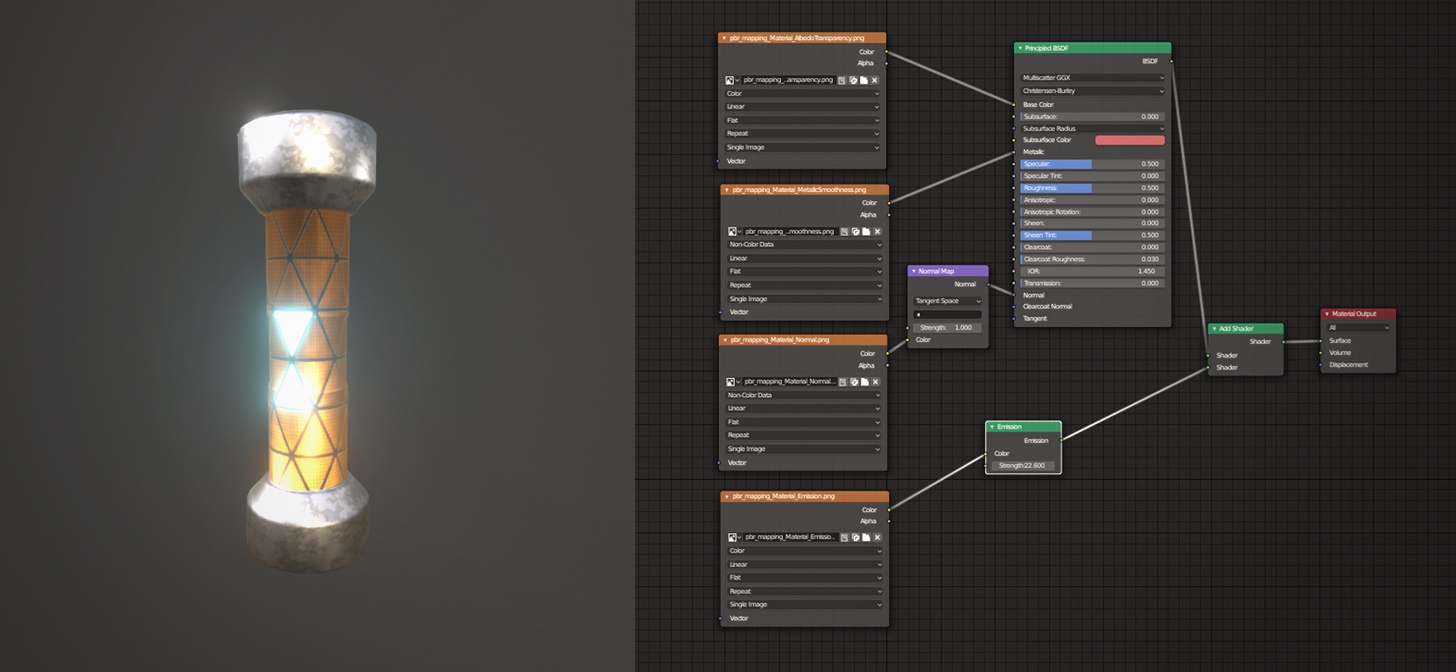

- Blender 2.8 quick node how to#
- Blender 2.8 quick node install#
- Blender 2.8 quick node code#
- Blender 2.8 quick node download#
- Blender 2.8 quick node free#

These allow you to easily disable most of the CPU-intensive features. (other features might get turned off from this panel in future versions of the exporter) Alternatively, use the +q1 to +q11. When first setting up your scene, and for fast preview rendering, turn off anti aliasing, depth of field, photons, Radiosity, expensive material features, and in the scene Shading panel, turn off shadows. The "On Completion" option to "Exit POV-Ray for Windows" (in the Render Menu). There is also an option in POV-Ray for windows interface to do the same: +C for "Continue trace" is able to recover the point at which your last render stopped and continue it from there (even if you switched off your computer) (Likewise, +WT2 would instruct POV-Ray to use two render threads.) +WT1 limits POV-Ray to using only one single render thread. The image will be sent back to Blender after completion (on Linux this is a hidden default switch to avoid OS specific editor problems). Use the command line switch -D to not show the rendered image in POV-Ray (slightly faster and lighter on memory). Command line switches consist of a / (Slash), + (plus) or - (minus) sign, followed by one or more alphabetic characters and possibly a numeric value. Some command line arguments can be passed to POV-Ray. Using no anti aliasing when camera Depth of field is on will speed up rendering and often provide decent enough images.Īlso called acceleration, it is set to automatic BSP (Binary space partitioning) by the exporter as it's generally the most efficient(POV-Ray 3.7 only) but other acceleration methods are available in POV-Ray. The default threshold is 0.3 but it may be changed using this Antialias_Threshold=n.n option.

If the color of a pixel differs from its neighbours (to the left or above) by at least the set threshold value, then the pixel is super-sampled by shooting a given, fixed number of additional rays. In the simple, non-recursive method, POV-Ray initially traces one ray per pixel. Higher values increase render time and may even introduce some undesired blur. Values must be comprised between 1 and 9. Some presets to radiosity are included, their names and settings are those of the rad_def include file shipped with POV-Ray, they set up the properties so you don't need to include the rad_def.inc in the exported pov, it's one of the many examples of what an interface like blender can bring to all POV-Ray users who are not used to have one.
Blender 2.8 quick node free#
In fact, it is more similar to final gathering of irradiance samples and provides a noise free indirect light. In POV-Ray, Radiosity is diffuse inter-reflection which has nothing to do with vertex color based radiosity.
Blender 2.8 quick node download#
Blender 2.8 quick node install#
Blender 2.8 quick node how to#
Instead, users are just expected to download and install it for themselves: See the Installation page for platform specific details on how to get, install or build POV-Ray. Though this exporter is currently shipped with any official Blender builds, the POV-Ray 3.7 renderer itself is not included in Blender like some other renderers are (Cycles or Freestyle for instance). The latest version of POV-Ray 3.7 can be found at: POV-Ray is an an SDL based (Scene Description Language) rendering engine with a long history that makes it very stable and feature rich. Standard Script Information at the bottom of this page. Chat room, IRC: #blenderpovray at freenode.Volumetrics and media (scattering/absorbing), blurry reflections(uberpov), ghosting for motion blur(uberpov), micropoly displacement (HGPOV) etc.
Blender 2.8 quick node code#
Custom POV-Ray code input giving access to any POV-Ray feature not supported by the exporter.Global Illumination: Radiosity (Indirect Lighting) Photons caustics (reflect/refract) meshlights.Texture influence channels: Alpha Diffuse Bump Specular Mirror (uses same channel as specular).Procedural textures (emulated from Blender Internal and POV-Ray native).Material properties such as filtering, emission, translucency, subsurface scattering, glass fog (tinted absorption), blurry/glossy reflections.Add POV-Ray specific non mesh primitives (never show tesselation).Geometry import and export with their modifiers, keyed and physics animation.Some key features of the exporter include:


 0 kommentar(er)
0 kommentar(er)
